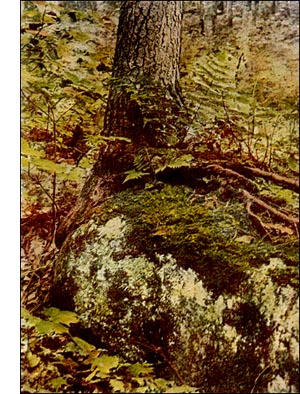Genus Georgia
 Genus GEORGIA, Ehrh.
Genus GEORGIA, Ehrh.The species of the Genus Georgia are erect, growing in clusters but not matted, on the ground, on rotten wood and sandstone.
The lower leaves are small, distant and scale-like; the upper leaves are longer, broadly lance-shaped, close and tufted at the apex of the stems, the vein reaches to below the apex; the cells are somewhat six-sided, less crowded and linear rectangular at the base. Linear root-leaves (frondiform) or whip-like leafy branches are often present. These fr-ondiform leaves appear in some species only in the protonemal stage, while in other species they persist at the base.
The spore-cases are cylindrical or oval on long slender, smooth, brown pedicels which are straight or abruptly bent. The lids are conical with mitre-like veils. The four teeth arising from just below the rim of the box are a conspicuous character of the genus. They are formed by the splitting of a solid mass of pithy tissue within the lid into four slender triangular segments, red and slightly furrowed on the back. A cross section of a tooth shows it to be triangular and composed externally of large transparent cells and internally of small thick-walled pointed cells. There is no annulus.
There are but two species known and both of these are found in North America.
The genus was named by Friedrich Ehrhart, in honour of King George III of England, whom he considered one of the greatest patrons of botany.
Georgia Geniculata Moss
Georgia Pellucida Moss